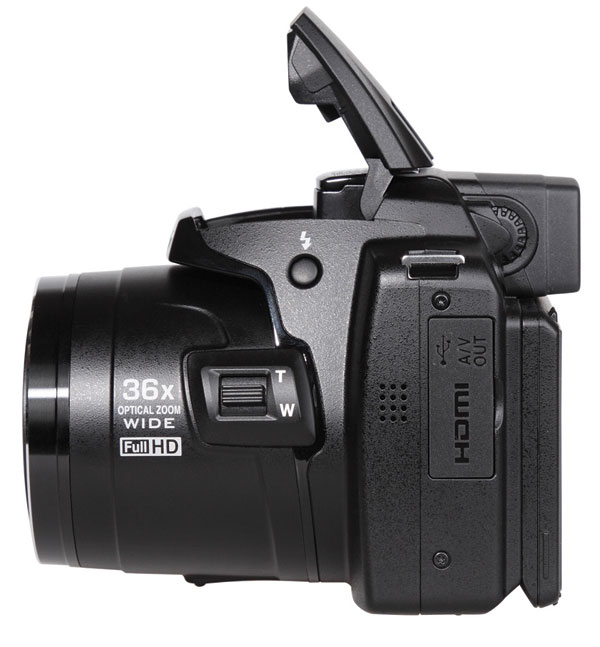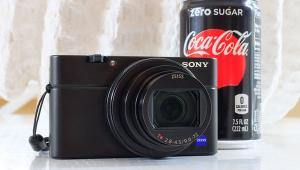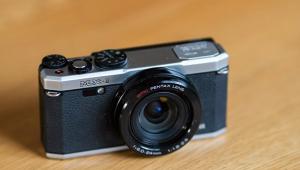The Nikon COOLPIX P500: Ultra Zoom Personified
The 12.1-megapixel Nikon COOLPIX P500 ($399.95, MSRP) is an integral lens camera with an incredible zoom range of 36x—that’s optical, not digital zoom and it gives you the equivalent angle of view of a wide-angle 22.5mm to a super tele of 810mm! The Zoom-Nikkor ED glass lens can also be used for “super close-ups” with a minimum focusing distance of 0.4”.





Given this range there are, you would think, aids to keep the image steady, and Nikon has in fact supplied us with numerous functions to do just that—a CMOS shift stabilizer; a Best Shot Selector mode; high ISO settings for gaining fast shutter speeds; digital motion detection; a high-speed shooting mode; and an Auto ISO setting that can be shutter speed “limited” so that you have a base fast shutter speed below which the Auto or Program mode will not go. Does this ensure steady shots at all ranges? Having worked with the camera in a variety of lighting and weather conditions I have to say that while the systems are there to help you, steadiness still relies on your shooting posture and technique most of all. Want guaranteed steady shots at very long focal lengths? Use a tripod.

All Photos© George Schaub
My tests were mixed, to say the least, and while I could get shots at the highest range I felt it was pushing the limits and the success rate was about 50 percent, even given fairly good care when shooting and using IS on and fast shutter speed. Much less effective results were gotten when venturing into digital zoom land (as well as getting lower res files) but it is there if you want it. Check the accompanying illustrations for more and some comments on the lens results at the edges of the range. All in all, when shooting at the farthest reaches turn IS off and use a small tripod. Plenty of nice ones are coming out, like the Velbon PHD-42Q I used in some of my tests.
The camera is small and lightweight, thus easy to carry but buoyant in handling, thus more prone to shake. To help matters there’s an additional zoom switch on the left side of the lens system. You can change focal length by using the standard zoom switch near the shutter release button or this second switch, which is good for vertical compositions and, for me, horizontal video shooting. Do note that the camera has two Panoramic modes—Easy, which is a “sweep” panorama function with one shutter release, and a Stitch mode that relies on the usual series of overlapping shots. Easy only works at the wide setting, while Stitch can be used at all focal lengths.
Another worthy feature of note is a very short, if at all noticeable, shutter lag, as long as you lightly depress the shutter and get the camera ready to shoot when anticipating the peak moment. You can also use a continuous shooting mode to help cut down on loss of critical shots that might otherwise be subject to shutter lag limitations, but again shutter lag was not an issue for me with this camera.
The Nikon P500 is able to record Full HD video; in addition it has a 720p mode and an iFrame 540 mode with 960x540 pixels per frame. Developed by Apple, “iFrame” uses H.264 compression and less pixels to simplify video editing with software like iMovie. I shot Full HD indoors at a high ISO setting and the videos came out just fine.
The camera has all the standard interfaces: HDMI for high-resolution image and video presentation on HDTVs and a combo interface for USB data transfer and TV connection to a standard PAL/NTSC TV. That interface holds a bit of a surprise. You charge the battery in the camera using a camera to AC adapter setup, which does save space but prevents you from charging a spare while shooting with the other. No separate charger setup is supplied. Given that this camera can use up a charge rather quickly when you use video, zoom, playback, etc., this could create a power problem when out in the field for a long day’s shoot. My best advice is to make sure it is fully charged each day prior to shooting.
The camera does offer a kind of swivel LCD which allows you to tilt the monitor at right angles and upward, but not side to side, like some more flexible units. Kudos to Nikon for a very bright and readable monitor; when it becomes unreadable in very bright light or due to reflectivity you can easily switch to an EVF with diopter adjustment, again quite readable when compared to others in its class.



The camera looks great and is no drag on the shoulder or hand when carrying. It allows for numerous creative controls aside from the presets in the Scene modes, and has a very deep menu that offers even more. It has all the functions one could want and allows for a variety of video options. Clearly the 36x optical/integral zoom lens is the headline here, and the range is rather mind-boggling once you get it in hand. Nikon has put in numerous backups to aid in getting successful shots throughout the range, and if this amazing zoom range is what you want in a very lightweight, integral lens camera then you won’t go too far wrong giving the P500 your consideration.
Lab Results
In tests performed on this camera by our TIPA affiliate lab, BetterNet, the GretagMacbeth test chart was reproduced with a saturation of 106.3 percent, a fairly standard oversaturation for compact cameras. The automatic white balance system showed a remarkably good performance and the gray elements of the test chart are located exactly in the center. Skin tone colors were very accurate. Blue shows a shift into higher saturated, nearly magenta rendition. Red colors have a very high yellow rate.

© BetterNet
The camera showed good performance in resolution tests. The test image was reproduced with 2385 lines per picture height, which is an average result for a camera with 3000 pixels. The camera shows a very intense USM (sharpening) filtering, which causes a slight clipping on contrast lines. However, clipping isn’t really noticeable in real-life images, like in the portrait test shot or the shot of the standard test box.

© BetterNet
The Nikon P500 offers clean and smooth images up to ISO speed 800. At ISO 1600 and higher some color “clouds” appear in homogeneously colored areas, such as the gray patterns of the dynamic range and noise test chart. Even at lower ISO speed settings the camera uses an anti-noise filtering, but it is less intense than the noise filtering used by cameras with higher megapixel counts on small sensors.
With 9.53 f/stops, the Nikon P500 showed good performance in dynamic range tests, but do note that there are a lot of compact cameras that will achieve a dynamic range of more than 10 f/stops. This does not seem to affect the overall image satisfaction, and users can work with Nikon’s D-Lighting in various strengths to overcome difficult lighting conditions.
For more information, contact Nikon Inc. at: www.nikonusa.com.
















































